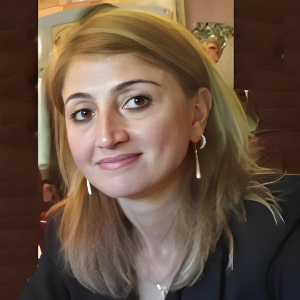Title : Comparative study of the domain wall pinning in cobalt micropowders and nanowires by the two nuclear magnetic resonance methods
Abstract:
Two alternative NMR methods under the influence of an additional magnetic video-pulse for the measuring of the pinning (fixation) force of domain walls in one-dimensional nanostructures, such as cobalt nanowires, were proposed and investigated. All necessary detailed information on the original method for the synthesis of cobalt micropowders and nanowires is provided. The characteristics of pinning centers of domain walls in cobalt micropowders and nanowires are studied by two alternative methods of nuclear magnetic resonance observed as an echo signal under the influence of an additional magnetic video-pulse: by the effect of a magnetic video-pulse on a two-pulse echo signal and by the threshold for generating a magnetic echo signal at combined influence of a radiofrequency pulse and a magnetic video-pulse on a sample. It is shown that the degree of pinning of domain walls in cobalt linearly depends on the external constant magnetic field. Potential applications include the creation of sensor devices and permanent magnets that do not contain rare earth elements.
This work was supported by Shota Rustaveli National Science Foundation of Georgia (SRNSFG) grant # [FR-22-7899].
Audience Take Away Notes:
- Magnetic nanomaterials with controllable morphology and dimensions are important for the fabrication of nanoscale devices and functional materials. Recently, the formation of one-dimensional (1-D) nanostructures, such as nanowires, has attracted considerable attention due to their large anisotropic surface magnetism, which is excellent for applications in permanent magnets, high-density magnetic storage media, sensors, and catalysts. 1-D Co nanostructures have been prepared by a variety of methods, among them by template-based electrodeposition successfully fabricating well aligned magnetic nanowires with controllable diameter and length
- However, application of this method to large-scale production is complicated by the preparation of the templates and their subsequent removal from the nanowires. Recently, the application of magnetic fields during solution reduction for hydrothermal and solvothermal synthesis, has been widely used to fabricate 1-D Co nanostructures due to its simplicity and effectiveness. However, these processes need high temperature, high pressure, and long reaction time
- In this work simple and effective low-temperature electroless method providing synthesis of cobalt micro- and nanowires due to self-organization processes of cobalt magnetic nanoparticles under magnetic field influence, is elaborated allowing for a development of electroless technology for synthesis of magnetic nanoparticles and nanowires. It requires the interdisciplinary research with participation of physicists, chemists, materials scientists and technologists
- Currently many efforts have been focused on the RE free permanent magnets due to various issues arising from the RE elements, among them the need to lightened supply of Rear-Earth (RE) elements in the global market
- We propose to obtain magnets of this type with a polymer matrix by using the combined effect of temperature, variable and constant magnetic fields to orient nanowires in the polymer matrix, using Co nanowires obtained by electroless method


